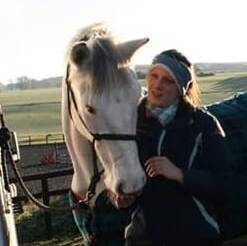Tickling rats to improve their welfare
The ethics of laboratory animal use is defined by the 3Rs framework (Reduction, Replacement, Refinement1), where refinement addresses animal welfare concerns. The concept of refinement has traditionally focused on the minimisation of negative states such as pain and distress. However, refinement is increasingly coming to include positive improvements to laboratory animals' lives such as providing environmental enrichment2.
One approach to enhancing PAW in laboratory rats is to tickle them. The idea of tickling rats in science came from the work of neuroscientists Jaak Panksepp and Jeffrey Burgdorf (20013), who initially used the human hand to mimic the physical sensations that rats give each other when they are playing. Tickling rats in science has general appeal as shown by number of views of videos on tickling, perhaps because of the scientific evidence that rats enjoy being tickled.
How do we know rats like tickling?
Tickled rats often produce ultrasonic vocalisations (USVs) that are thought to reflect positive emotional states (see Box 1). Also tickled rats voluntarily approach the human (tickling) hand and can be trained to perform a task to receive tickling3.
Box 1:
Rats’ ultrasonic vocalisations (USVs): Rats mainly produce vocalisations in the ultra-sound above the threshold for human hearing (around 20 kHz). A large body of research has linked these USVs to the rats’ emotional state. USVs in the range 20-30 kHz (referred to as 22 kHz calls) are thought to signal negative emotional states such as fear, whilst USVs in the range 30-80 kHz (or 50 kHz calls) are believed to signal positive emotions. For example when rats are anticipating a positive experience they often produce 50 kHz calls.
See Brudzynski, S. M. (Ed.). (2018). Handbook of ultrasonic vocalization: A window into the emotional brain. Academic Press).
Do all rats like being tickled?
Despite the scientific support for tickling as a positive experience for rats there is also growing evidence of individual differences in response to tickling. For example, to quote the NC3Rs web-site:
“But I hate being tickled; shouldn't rats hate it too? This is a common concern, and it is true that some rats enjoy it more than others”
See also Figure 2 in Bombail et al. 20224
There is a risk therefore that some rats perceive tickling as only a neutral experience, depending on how tickling is performed. This individuality has implications for animal welfare, as for some animals tickling may not be as welfare enhancing as it is intended, but also for the wider use of tickling. For example, individual responses to tickling could introduce more variability into experiments, and create uncertainty in trainees learning to tickle rats.
From our experience we think that individual differences in response to tickling are caused by the standard approach to tickling and specifically the use of pinning (see Box 2).
Box 2:
These drawings illustrate the behaviours seen in rats during: i) social play (Pellis & Pellis, 20136); ii) the standard version of tickling (Cloutier et al., 20187); and iii) playful handling (Bombail et al., 20198; 20215).
Letters indicate rat behaviours that share similar or the same physical characteristics: A) pouncing, B) nape contact, C) pinning, D) chasing, E) boxing and F) flipping. During social play (i) or playful handling (iii), behaviours can occur in any order and do not always occur in each play bout. During tickling (ii), the sequence is always B, F, C. Drawings by Tayla Hammond
What behaviours do rats perform when tickled?
Rat play consists of different behaviours including where one rat pins the other on its back for a few seconds. The use of pinning has become a major part of how the tickling method is described and taught. For a number of reasons, we argue that it is the use of pinning which causes individual responses to tickling5. As an alternative approach we have developed a playful handling technique which we argue more closely matches the characteristics of play in rats.
Our project:
We have published the full plan of our work here4. Our primary aim is to test whether tickling rats using playful handling versus the standard approach with pinning will result in an overall increase in 50 kHz USVs as an indicator of positive emotional state. We will also test whether playful handling versus the standard approach will reduce individual variation in 50 kHz calls.
The Project Team:
Other links:
Read more:
Our study protocol is available here.
- Beechener, S; Brown, S; Bobail, V; Lafollette, M; Vinuela-Fernandez, I & Lawrence, A. 2023. An exploratory interview study of researchers’ and technicians’ perception of rat tickling. Animal Technology and Welfare journal. December 2023, 201-209. Access here
- Champeil-Potokar, G., Kreichati, L., Rampin, O., Denis, I., Darcel, N., & Bombail, V. (2023). Rats chirp with their mouth full: During an experimental meal, adult male Wistar rats emitted flat ultrasonic vocalisations upon feeding. Frontiers in Behavioral Neuroscience, 17, 1089631. https://doi.org/10.3389/fnbeh.2023.1089631
- Hammond, T., Bombail, V., Nielsen, B. L., Meddle, S. L., Lawrence, A. B., & Brown, S. M. (2019). Relationships between play and responses to tickling in male juvenile rats. Applied Animal Behaviour Science, 104879. doi.org/10.1016/j.applanim.2019.104879
- Tivey, E. K. L., Martin, J. E., Brown, S. M., Bombail, V., Lawrence, A. B., & Meddle, S. L. (2022). Sex differences in 50 kHz call subtypes emitted during tickling-induced playful behaviour in rats. Scientific Reports, 12(1), 15323. doi.org/10.1038/s41598-022-19362-7
References:
1. Russell, W. M. S., & Burch, R. L. (1959). The principles of humane experimental technique. Methuen. https://caat.jhsph.edu/principles/the-principles-of-humane-experimental-technique
2. Turner, P. V. (2020). Moving Beyond the Absence of Pain and Distress: Focusing on Positive Animal Welfare. ILAR Journal. https://doi.org/10.1093/ilar/ilaa017
Ratuski, A. S., & Weary, D. M. (2022). Environmental Enrichment for Rats and Mice Housed in Laboratories: A Metareview. Animals : An Open Access Journal from MDPI, 12(4), 414. https://doi.org/10.3390/ani12040414
3. Burgdorf, J., & Panksepp, J. (2001). Tickling induces reward in adolescent rats. Physiology & Behavior, 72(1–2), 167–173. https://doi.org/10.1016/S0031-9384(00)00411-X
4. Bombail, V., Brown, S. M., Martin, J. E., Meddle, S. L., Mendl, M., Robinson, E. S. J., Hammond, T. J., Nielsen, B. L., LaFollette, M. R., Vinuela-Fernandez, I., Tivey, E. K. L., & Lawrence, A. B. (2022). Stage 1 Registered Report: Refinement of tickling protocols to improve positive animal welfare in laboratory rats. F1000Research, 11, 1053. https://doi.org/10.12688/f1000research.125649.1
5. Bombail, V., Brown, S. M., Hammond, T. J., Meddle, S. L., Nielsen, B. L., Tivey, E. K. L., & Lawrence, A. B. (2021). Crying With Laughter: Adapting the Tickling Protocol to Address Individual Differences Among Rats in Their Response to Playful Handling. Frontiers in Veterinary Science, 8, 677872. https://doi.org/10.3389/fvets.2021.677872
6. Pellis, S. and Pellis, V., 2013. The playful brain: venturing to the limits of neuroscience. Simon and Schuster.
7. Cloutier, S., LaFollette, M.R., Gaskill, B.N., Panksepp, J. and Newberry, R.C., 2018. Tickling, a technique for inducing positive affect when handling rats. JoVE (Journal of Visualized Experiments), (135), p.e57190. https://doi:10.3791/57190
8. Bombail, V., Jerôme, N., Lam, H., Muszlak, S., Meddle, S.L., Lawrence, A.B. and Nielsen, B.L., 2019. Odour conditioning of positive affective states: rats can learn to associate an odour with being tickled. PLoS One, 14(6), p.e0212829. https://doi.org/10.1371/journal.pone.0212829














